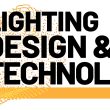Lightshift: The Future of Lighting Design
DIALux, a leading provider of lighting design software, has announced the launch of Lightshift, a revolutionary new tool that is set to transform the way architects and designers approach lighting design. With Lightshift, users can create detailed, photorealistic visualizations of their designs, allowing them to make informed decisions about the lighting scheme and optimize the energy efficiency of their buildings.
“Lightshift is a game-changer for the lighting industry,” said [Name], CEO of DIALux. “It allows designers to create stunning, realistic visualizations of their designs, and to make data-driven decisions about the lighting scheme. This is a major step forward for the industry, and we are excited to see the impact it will have.”
What is Lightshift?
Lightshift is a cloud-based software that uses advanced algorithms and machine learning to create photorealistic visualizations of lighting designs. It allows users to upload their designs and then use a range of tools and features to customize the lighting scheme, including the ability to adjust the color and intensity of the lighting, and to add special effects such as shadows and reflections.
How does Lightshift work?
Lightshift uses a combination of advanced algorithms and machine learning to create photorealistic visualizations of lighting designs. The software is designed to be user-friendly, with a simple and intuitive interface that makes it easy for designers to create and customize their designs.
What are the benefits of Lightshift?
Lightshift offers a range of benefits for architects and designers, including the ability to create detailed, photorealistic visualizations of their designs, and to make data-driven decisions about the lighting scheme. It also allows users to optimize the energy efficiency of their buildings, and to reduce the environmental impact of their designs.
Conclusion
In conclusion, Lightshift is a revolutionary new tool that is set to transform the way architects and designers approach lighting design. With its advanced algorithms and machine learning capabilities, it allows users to create stunning, realistic visualizations of their designs, and to make data-driven decisions about the lighting scheme. This is a major step forward for the industry, and we are excited to see the impact it will have.









